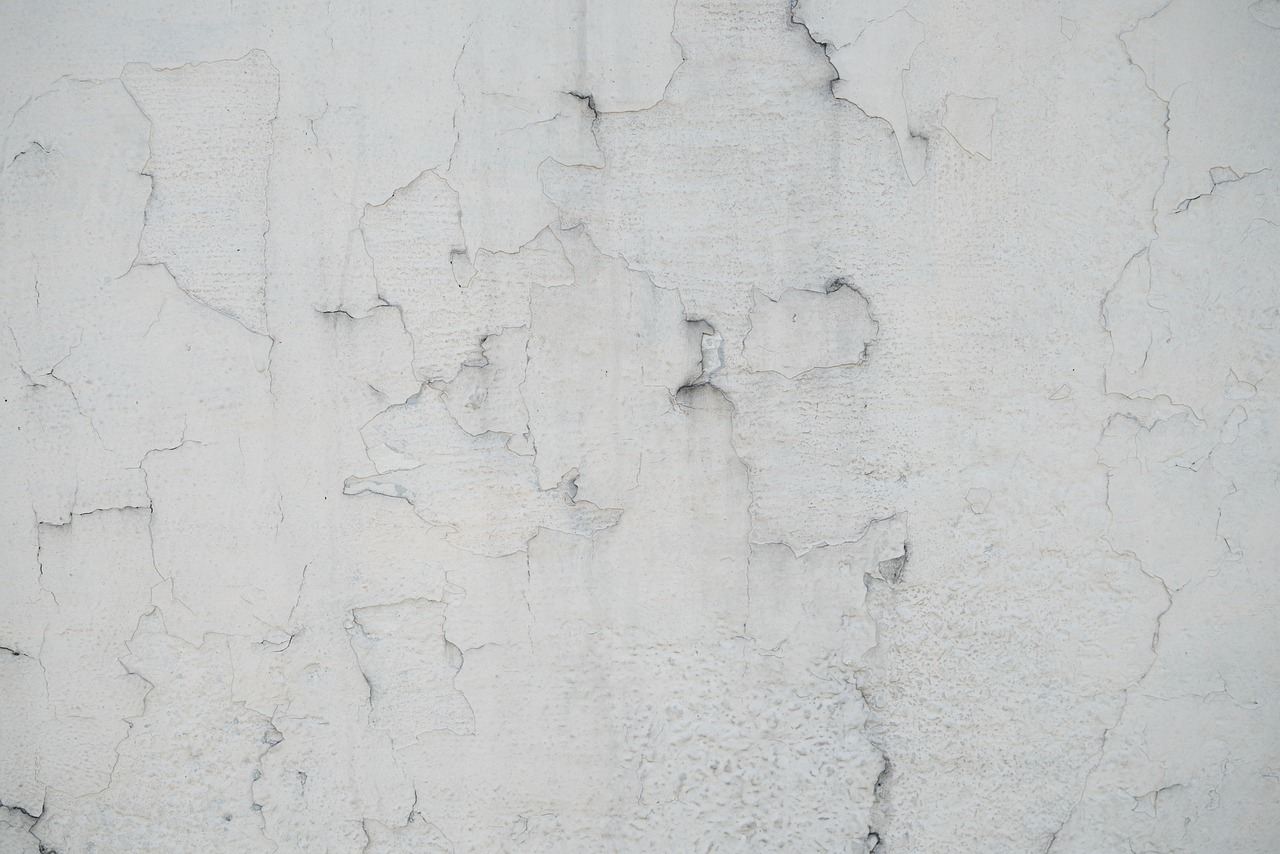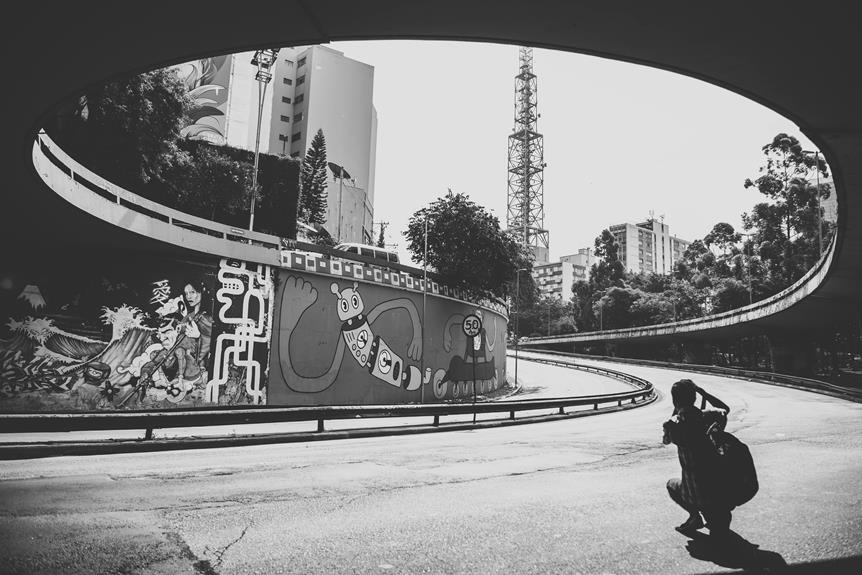Glitch Art

Glitch art merges technology and creativity, turning digital errors into enthralling visual narratives.
It originated in the late 1990s with programmers experimenting with code errors and quickly gained traction in underground scenes.
Techniques like data manipulation and circuit bending play key roles in creating its distinct aesthetic.
Tools like Audacity, Notepad, and digital software help artists push the boundaries of visual distortion. Prominent artists such as Rosa Menkman and Nick Briz continue to redefine glitch aesthetics.
Events and showcases amplify glitch art’s reach, fostering a growing community. Explore further to uncover the depth of this fascinating genre.
Key Points
- Glitch art originates from intentional errors in digital media to create visual and auditory distortions.
- Techniques like data manipulation, circuit bending, and software tools are used to create glitch aesthetics.
- Pioneers like Rosa Menkman and Nick Briz have significantly influenced the glitch art movement.
- Popular tools for creating glitch art include Glitché, Adobe Photoshop, and MoshUp.
- Events such as GLI.TC/H and GlitchCon provide platforms for exhibiting and networking within the glitch art community.
History of Glitch Art
The history of glitch art reveals a fascinating journey from its roots in early computing to its current status as a mainstream aesthetic embraced by commercial brands.
Initially, programmers would introduce errors into code to create unexpected visuals, marking the early evolution of glitch art.
By the late 1990s, digital editing software allowed artists to manipulate digital files, pushing the boundaries of this emerging form.
As glitch art gained popularity in underground art and music scenes, it began to impact digital culture profoundly. Its experimental nature resonated with audiences seeking originality.
Today, glitch art’s distinct aesthetic is embraced by commercial brands, illustrating its shift from niche to mainstream.The genre continues to evolve, incorporating new technologies and creative approaches.
Techniques and Methods
When exploring glitch art techniques, you’ll find that data manipulation tools, circuit bending techniques, and software-based methods each offer distinct approaches to creating visual distortions.
You should evaluate how these methods contribute to the unique aesthetics by introducing intentional errors and unexpected results.
Combining different techniques can amplify the complexity and richness of your glitch art, making each piece a unique experiment in controlled chaos.
Data Manipulation Tools
In glitch art, data manipulation tools like Audacity, Notepad, and Hex editors become powerful allies in creating mesmerizing visual distortions.
Using audio manipulation in Audacity, for instance, you can open image files as raw data and tweak them to produce unexpected visual effects.
Notepad allows you to alter the code of image files directly, leading to intriguing glitch patterns.
Hex editors give you granular control, letting you modify the binary data of images, which results in stunning visual distortions.
These methods, known as data bending, are pivotal for glitch artists aiming to disrupt the conventional aesthetics of digital media.
Circuit Bending Techniques
Diving into circuit bending techniques, you’ll find that modifying electronic devices to produce unique glitches requires both creativity and technical skill.
This hands-on approach to glitch art involves DIY projects where you manipulate the device’s internal wiring and components.
By short-circuiting, adding switches, or altering resistors, you can achieve unexpected sound experimentation and visual manipulation.
Circuit bending merges art, music, and technology, offering a novel avenue for creative expression.
It’s not just about following a set of instructions but exploring how each modification impacts the device.
This practice encourages an evaluative mindset, as you continuously assess the artistic and functional outcomes of your modifications.
Ultimately, circuit bending is a dynamic way to create distinct glitch aesthetics.
Software-Based Glitch Methods
While circuit bending immerses you in the tangible manipulation of hardware, software-based glitch methods open up a domain of digital experimentation where tools like Audacity and Photoshop enable you to craft intricate visual and auditory distortions.
Techniques such as data bending in Audacity and pixel sorting in Photoshop are pivotal in creating glitch aesthetics and digital distortion.
This allows for creative experimentation, pushing the boundaries of traditional visual manipulation. Software tools offer endless possibilities, empowering you to explore and redefine digital media.
| Technique | Software | Purpose |
|---|---|---|
| Data Bending | Audacity | Auditory distortions |
| Pixel Sorting | Photoshop | Visual distortions |
| Error Injection | Custom Tools | Intentional glitches |
Famous Glitch Artists
When exploring the domain of glitch art, you can’t ignore the contributions of pioneers like Rosa Menkman and Raul Zaritsky, who’ve redefined digital aesthetics.
Iconic glitch artworks from artists like Jamie Fenton and Nick Briz challenge our perceptions of technology and culture.
Modern innovators such as Sabato Visconti push the boundaries with techniques like datamoshing, continually evolving the art form.
Pioneers in Glitch Art
Rosa Menkman, a seminal figure in glitch art, has profoundly influenced the field through her pioneering glitch studies and thought-provoking writings.
As one of the leading glitch art pioneers, her work has had a global impact, shaping the trajectory of glitch art evolution.
Jamie Fenton, with her glitch quilt, and Sabato Visconti, known for his datamoshing technique, have also made substantial contributions to the movement.
Daniel Temkin pushes the boundaries by exploring glitches in code and software, while Nick Briz focuses on glitch aesthetics and critical glitch studies.
These artists collectively drive the future trends in glitch art, continuously redefining the medium and expanding its possibilities.
Iconic Glitch Artworks
Exploring the world of iconic glitch artworks, it’s important to acknowledge how these masterpieces challenge traditional notions of digital aesthetics and redefine the boundaries of visual art.
Their cultural impact and artistic evolution are evident in their ability to convey complex emotions through visual storytelling and emotional resonance.
- Rosa Menkman: Her focus on noise artifacts and compression errors reveals the hidden beauty in digital imperfections.
- Raul Zaritsky: His video installations immerse you in glitch experiences, blurring the line between digital and physical realities.
- Nick Briz: By deconstructing digital culture, his work emphasizes critical media literacy and the often-overlooked aesthetics of digital errors.
These artists have elevated glitch art into a profound medium, showcasing its potential for deep cultural and emotional engagement.
Modern Glitch Innovators
Building upon the foundation laid by iconic glitch artworks, modern glitch innovators like Jamie Fenton and Dick Ainsworth push the envelope even further by integrating both analog and digital mediums, thereby expanding the scope and impact of glitch aesthetics.
Rosa Menkman advances glitch art education through her research on noise artifacts and active participation in the glitch art community.
Raul Zaritsky explores glitch aesthetics in video art and generative graphics, offering fresh perspectives in glitch art workshops.
Daniel Temkin focuses on code-based errors, presenting system aesthetics that challenge conventional boundaries.
These artists collectively contribute to the growing popularity and recognition of glitch art through engaging glitch art exhibitions and fostering a collaborative, innovative community.
Tools and Software
When delving into the world of glitch art, the variety of tools and software available can greatly influence the creative possibilities and outcomes.
You’ll find that mobile apps and digital tools are essential for glitch creation and applying glitch effects.
Here are three tools worth exploring:
- Glitché: A popular iPhone app offering a range of glitch filters and tools for creating unique digital art.
- Adobe Photoshop: Widely used for its robust capabilities in manipulating images and adding glitch effects.
- MoshUp: This app allows live datamoshing on iPhone or iPad, providing a unique glitch art experience.
Each tool offers distinctive features that can elevate your glitch art, whether you prefer mobile convenience or detailed digital manipulation.
Glitch Art Events
While tools and software are essential for crafting glitch art, events like the GLI.TC/H conference and /fu:bar/ in Krakow offer unparalleled opportunities to immerse yourself in the latest trends and network with fellow enthusiasts.
These glitch art festivals are pivotal for community engagement, providing a platform for learning and collaboration.
International glitch gatherings like these foster networking opportunities, allowing you to connect with other artists, attend workshops, and partake in symposiums.
| Event | Location | Key Features |
|---|---|---|
| GLI.TC/H | Various | Workshops, symposiums, networking |
| /fu:bar/ | Krakow | Exhibitions, tutorials, artist showcases |
| Digital Decay | Online | Virtual talks, interactive sessions |
| GlitchCon | Berlin | Live performances, community engagement |
These events highlight the dynamic nature of glitch art, promoting both innovation and community spirit.
Showcasing Glitch Art
Showcasing glitch art in diverse venues, from art galleries to online platforms, amplifies its reach and impact, allowing artists to connect with broader audiences and industry opportunities.
Online showcases and digital exhibitions offer accessible ways for artists to display their work.
Social media platforms, like Instagram, and online communities, such as Reddit’s r/glitch_art, provide spaces for continuous engagement and feedback.
Art galleries still hold significant value, offering a physical and immersive experience. Additionally, artists can leverage:
- Music videos and film productions: Utilize glitch art for dynamic visuals.
- Limited edition prints and NFTs: Create exclusive offerings for collectors.
- Collaborations and events: Partner with fellow artists for greater exposure.
Evaluating these methods, combining physical and digital avenues optimizes visibility and influence.
Frequently Asked Questions
What Does Glitch Mean in Art?
In art, glitches mean embracing digital errors and artistic distortions to create unique visuals. You challenge traditional beauty by manipulating data, software, or hardware, revealing deeper themes about technology, society, and digital culture.
How to Do Glitch Art?
To create glitch art, you should use digital manipulation techniques like data bending and pixel distortion. Experiment by altering file data and introducing errors. Engaging with online communities and tutorials can enhance your skills and innovation.
What Is Glitch Style?
Glitch style embraces digital aesthetics through intentional visual distortion. You’ll find it challenges traditional norms by showcasing imperfections. By manipulating data or using specific techniques, you create an art form that highlights the beauty in errors.
What Is the Glitch Effect Called?
You call it the glitch effect, stemming from digital manipulation and error aesthetics. It intentionally disrupts visual media, creating pixelation, color distortions, and misalignments. This technique explores the interplay between technology and visual imperfection.
Conclusion
In exploring glitch art, you’ve explored its rich history, diverse techniques, and influential artists.
You’ve seen how tools and software transform errors into masterpieces, and how events celebrate this unique art form.
By examining glitch art, you’re not just observing digital mistakes; you’re appreciating a creative process that challenges traditional aesthetics.
It’s a demonstration of how unpredictability and imperfection can lead to profound artistic expression.
So, embrace the glitches—they might inspire your next creative breakthrough.
Author: Jessica Hartley

